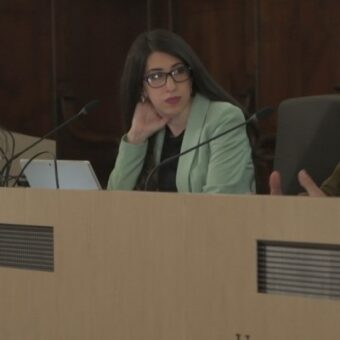Past Fellows
Giorgio Motisi
Winter/Spring 2022
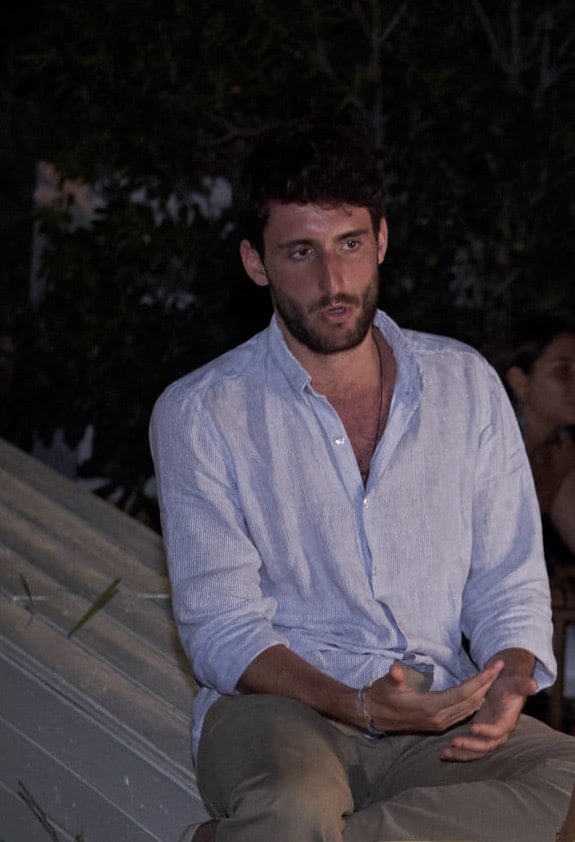
Giorgio Motisi is a PhD candidate in Art History at the Scuola Normale Superiore (Pisa). His doctoral research, supervised by professor Flavio Fergonzi, focuses on the Italian Ultimo Naturalismo (“Last Naturalism”) and Francesco Arcangeli’s work as a critic during the 1950s. Giorgio attended both the University of Pisa and the Scuola Normale Superiore. In 2018, after completing an internship at the Marino Marini Foundation (Pistoia), he defended a thesis on Marini’s portraits. An extract of the thesis has been published in the CIMA journal (Italian Modern Art, 2021). In 2020, he discussed his MA thesis on the portraits of the anti-fascist group Corrente, which emphasized the social and political values of these artworks. The first results of the thesis are about to be presented at a conference at the Kunsthistorisches Institut (Florence 2021). Giorgio’s main area of interest is Italian 20th century painting and sculpture, with an emphasis on their connections to the sociocultural context, the reception of ancient and Renaissance art, and the critical dialogue with the international avant-gard. On these subjects he has contributed book chapters, published articles in leading academic journals (Annali della Scuola Normale Superiore, 2020; L’uomo nero, 2021), and attended international conferences (Pisa 2019; Ravenna 2021; Reims 2021; New York 2021). He is a contributor to Dizionario Biografico degli Italiani (Enciclopedia Treccani), with entries on the painters Filippo de Pisis (2019), Ernesto Treccani (2020), and Italo Valenti (2020). Furthermore, since 2018 he has been on the board of FAcT (Festival of Academic Theater): an association which organizes international festivals for university theater companies. Giorgio’s research project for the 2022 CIMA Fellowship proposes a new way of interpreting an oftenoverlooked issue: the value of titles in socially committed artworks of the late-19th and early-20th centuries. In those decades, indeed, Italian painters and sculptors showed an unprecedented interest in their choice of titles, conceiving them as instruments capable of deeply enriching their works. Taking into account a large number of case studies, the main purpose of the project will be to understand not only the sources but also the reasons and aims of their choices, providing a starting point for analyzing the inner workings of titles, their critical reception and their variations depending on different contexts and audiences.
Aja Martin
Summer-Fall 2021
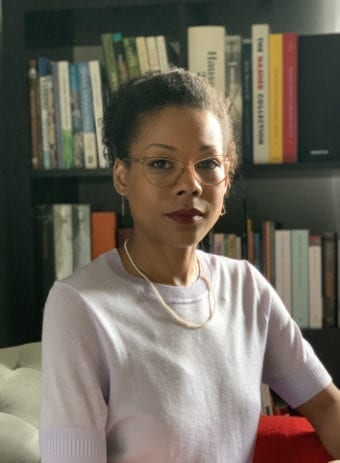
Aja Martin is a doctoral candidate in Art History at Rice University where she studies twentieth-century art and film of Italy. Her dissertation, “Chain of Shadows: Lucio Fontana’s ‘Concetto spaziale, Teatrini,’ and the Modern Grotesque’” addresses that lesser-studied group of shadow-boxes, as well as his “Ambienti spaziali” installations, to suggest how these series chide the artist’s seemingly nihilist claims for painting, proposed both in interviews and in the “Concetto spaziale: Attese” monochrome series. Through careful visual analysis, her project reveals how the series, instead, offer complex formulations of vital boundaries – an act crucial in Fontana’s distinction of works of art from their surrounds and the viewer, from other visual art mediums, and art forms. Given the theatrically-inspired structure of the “Concetto spaziale, Teatrini,” Aja’s project operates within the the broader art-historical dialogue between the theater and modern painting and seeks to extend these ideas toward the filmic frame, also apparent within the shadow box’s structure and color relationships.
Aja holds a Master’s Degree in Art History from Southern Methodist University and has presented her research nationally at graduate conferences, curated numerous contemporary art exhibitions, and served in curatorial departments, institutions and boards across Texas. Her previous research was attuned to the shifting notions of landscape from the medieval to the modern era, with an emphasis on Latin America and the US. Her current work picks up in Argentina, Fontana’s second home and birthplace, but crosses the Atlantic, to Italy, where Fontana would act as an important international conduit connecting with artists across Europe. Aja’s prior research into constructed public and private spaces opened onto notions of technology, vision, and being; which Aja continues to pursue in the work of Lucio Fontana, through his ultimate “spatialist realisms,” the “Concetto spaziale, Teatrini.”
Aja will pursue similar lines of research toward the work of 2020–21 feature artist, Mario Schifano, where she will investigate the artist’s manifestations of presence and absence within hybrid spaces that interface landscape with the framed, even televisual view. Beginning with formal properties, or the thing at hand, she will contribute extensive analyses of select works on display in order to offer new insights on Schifano’s practice, his relationship to American postwar artists, and the temporally dynamic Italian milieu.
Biancalucia Maglione
Summer/Fall 2021
Biancalucia Maglione is a PhD candidate in Art History at the University of Florence, Pisa and Siena. Her PhD research focuses on Italian collector Carlo Frua De Angeli (1885-1969) within the context of Milan’s art market between 1930 and 1950. The project is mostly based on provenance studies and on the analysis of galleries’ activities in Milan.
She did research on this subject at the Provenance Research Workshop at the Castello di Rivoli (Torino), and she is currently writing for the Art Market Dictionary (ed. De Gruyter).
Furthermore, since 2017 she has been Teaching Assistant in Contemporary Art at the University of Pisa, where she also had two research scholarships.
Previously, she obtained a MA (cum laude) in Modern and Contemporary Art History at the University of Pisa, with a dissertation on the Italian painter Osvaldo Licini (1894-1958). Much of the research for her dissertation took place during a research internship at the Musée National d’Art Moderne – Centre Georges Pompidou, in Paris. She has both published and presented at conferences on Licini and, more recently, she has been part of the scientific committee of the exhibition La regione delle Madri. I paesaggi di Osvaldo Licini (Monte Vidon Corrado, 2020).
She was awarded a BA (cum laude) in Contemporary Art History from the University of Pisa, with a thesis on the Italian contemporary artist Loris Cecchini (published in 2017: Loris Cecchini. Testing effects, dancing reactions, Pacini Editore).
Her recent publications include essays on sculpture (“Prima di tutto il ritratto”. Un’aggiunta al catalogo di Marino Marini, «Critica d’Arte», expected 2021), Surrealism (L’ornement sens nom tra grafica tardo-ottocentesca e ibridazioni surrealiste, exh. catalogue Raffaello e la Domus Aurea, 2020) and the inter-war Italian art (Carlo Ludovico Ragghianti e Osvaldo Licini. Verso Arte moderna in Italia 1915-1935, in Carlo Ludovico Ragghianti e l’arte italiana tra le due guerre, symposium proceedings, 2020).
At the Center for Italian Modern Art, Biancalucia intends to investigate the importance of photography in Schifano’s early career, focussing on both the artist’s material practice of the medium in the pictorial field and the painter’s constant reflection on photographic framing. The overarching aim is to ascertain whether and to what extent certain typically photographic categories, syntactical and grammar rules can function as a plausible, even if not exclusive, analytical and interpretive tool to discuss some specific results of Schifano’s early oeuvre.
Marica Antonucci
Spring 2021
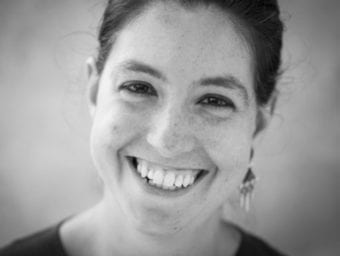
Marica Antonucci is a Ph.D. candidate in the history of art at Johns Hopkins University, where she specializes in twentieth-century art. Her dissertation analyzes the intersections of artistic creation, political commitment, and conceptions of community during the turbulent 1960s and 1970s in Italy. From 2018–2020, she was a predoctoral fellow at the Bibliotheca Hertziana – Max Planck Institute for Art History, working within the “Rome Contemporary” research initiative in the department of Prof. Tristan Weddigen. Previously, she served as the Carlson/Cowart Fellow in the Department of Prints Drawings and Photographs at the Baltimore Museum of Art from 2017–2018. She holds an M.A. from the University of Pennsylvania and a B.A. from New York University. During her time at CIMA, she will be examining Mario Schifano’s relationship to postwar realist currents, both domestic and international, in order to shed light on overlooked aspects of the artist’s practice. In so doing, her project opens onto broader historiographical issues including the limits of realism itself.
Virginia Magnaghi
Winter - Spring 2021
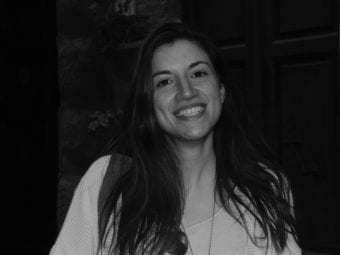
Virginia Magnaghi is a Ph.D. candidate in Art History at the Scuola Normale Superiore (Pisa). Her doctoral research focuses on Italian landscape painting under Fascism (1920–1939), with special attention to the political implications of the realist issue when approaching nature. Urban views aside, her project aims to understand the role of nature as a pictorial, but also literary and cinematographic subject in Italy under the regime.
She attended both the Scuola Normale Superiore and the University of Pisa for her MA, defending a thesis on Raphael’s fortune among Italian critics and painters in the first half of the XX century. Raphael’s reception resulted being a very precious lens to differently approach Italian modern art history. An extract of the thesis is about to be published in the journal of the Academy of France in Rome (“Marea che si frange”? Raffaello nella critica e nell’arte italiana del primo Novecento, Studiolo, expected 2021) and she collaborated on the current exhibition on the reception of Raphael in the Accademia di San Luca in Rome (Raffaello. L’Accademia di San Luca e il mito dell’Urbinate, Roma, 2020-21). She previously graduated in Early Modern Art History at Ca’ Foscari University in Venice, after being a visiting student in Paris (Université Paris IV).
She is a contributor to Dizionario Biografico degli Italiani, with entries on the landscape painters and engravers Francesco Vitalini, Giuseppe Viviani, and Teodoro Wolf-Ferrari (2020, and expected 2021).
As a fellow at CIMA, Virginia will study Mario Schifano’s early landscape paintings (1962–65), proposing to highlight their close relationship not only with photography and art in the US, but also with the Italian and European pictorial tradition. Her research project aims to investigate both the series Particolari (1962–64) and the first Paesaggi anemici (1964–65), re-weighing their pictorial characteristics and their possible sources. She is also interested in the ties between the canvases and the crucial drawings on paper, to finally reflect on the status of landscape between Rome and New York in the first half of the 1960s.
Besides her doctoral studies, her interest in contemporary art led to an article on the 58th Venice Biennale (La scelta come rinuncia seduttiva. Quattro casi di moltiplicazione visiva alla Biennale Arte 2019, ed. La Biennale di Venezia, 2020). She has also been following contemporary dance and theater, and she is a regular contributor for the journal of theater studies «Stratagemmi – Prospettive teatrali».
Carlotta Vacchelli
Fall 2020 - Spring 2021
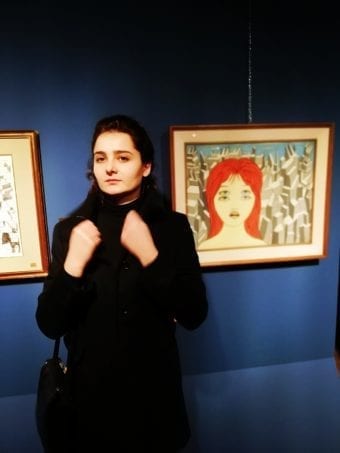
Carlotta Vacchelli is a Ph.D. Candidate in Italian Studies at Indiana University, with a specialization in Comics Studies. She received her first M.A. in Modern Philology at the University of Pavia, and her second M.A. in Italian Studies at Indiana University. Her dissertation explores the influence of Andrea Pazienza on the next generation of Italian graphic novelists, especially through a close stylistic examination of panels and drawings, as well as techniques, and materials employed. Carlotta has published numerous articles on the subject matter making a case for comics, both auteur and mainstream, as a lively component of the long-term artistic discourse, and she has identified many Renaissance, Modern and Contemporary works as a source of comics figuration. Investigating different forms of image/text and image/narration relationships, and studying artists’ books is also part of Carlotta’s research agenda. Carlotta strongly believes in the existence of what she defines “expanded liberal arts,” an interdisciplinary, dialectic category where pop (underground, nerd, sub-, counter-, etc.) culture could be studied, taught, and understood as part of a greater set of humanistic knowledge.
At CIMA, Carlotta will complete her post-doc research on Mario Schifano’s art as an aesthetic source for the Italian comics avant-garde active on the journals Cannibale and Frigidaire in the 1970s and ’80s. She will analyze Schifano’s influence in the context of auteur comics of the 1960s–’80s, but she will also focus on Schifano’s later art, namely that of the 1980s, as the phase of “remediation” of many of the contents and styles of his paintings of the 1960s, in light of her conviction that Schifano’s reflection on media and merchandise plays a fundamental role in his Anschauung.
Nicol Mocchi
Fall 2019
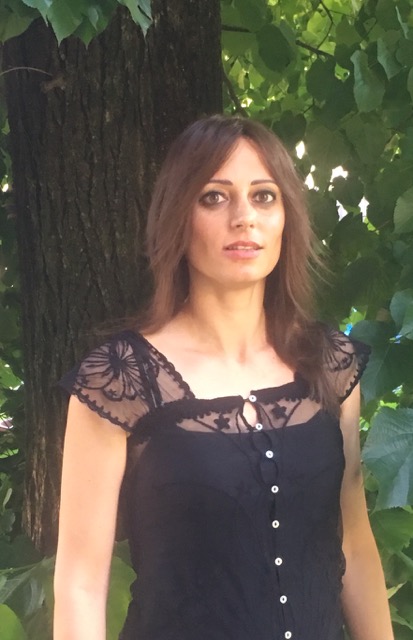
Nicol Maria Mocchi is an Italian art historian specialized in modern and contemporary art. She obtained her PhD in 2014 from the University of Udine with a thesis entitled Fonti visive internazionali per gli artisti italiani negli anni del Simbolismo. Since 2010, she has collaborated with Milan’s Superintendence of Fine Arts and with the Archivio dell’Arte Metafisica. Most of her research has been devoted to Metaphysical Art, from its philosophical-cultural sources (latest essays appear in the exhibition catatalogue Préhistoire et Modernité, Paris 2019; De Chirico e Savinio, Parma 2019); to its national and international spread and reception (i.e. James T. Soby’s relationships to the de Chirico brothers, Studi OnLine, no. 9/10, 2018; Onslow-Ford’s show/lectures held in New York in 1941, Studi OnLine, no. 5/6, 2016). She is the author of La cultura dei fratelli de Chirico agli albori dell’arte metafisica (Milan 2017) based on an in-depth study of the books borrowed or consulted by the de Chirico brothers in the libraries of Milan and Florence between 1909 and 1911. Her other major research interests are the connections and exchanges between diverse visual cultures of the nineteenth and twentieth centuries, with an emphasis on Austro-German, Anglo-American and Italian artists and movements. Her recent publications include essays on Symbolism, Divisionism, Futurism and Secessionist art (Prospettiva, 2018; Saggi e Memorie di Storia dell’Arte, 2018; Stati d’animo, exh. cat. Ferrara 2018), on Morandi (New York New York, ex. cat. Milan 2017), and Boccioni (Umberto Boccioni, ex. cat. Milan/Rovereto 2016).
In 2016, she was a fellow at CIMA working on the reception, visual success and critical fortunes of Giorgio Morandi’s œuvre in the US, leading up to the 1950s.
Her current research project at CIMA will focus on Marino Marini’s voluntary exile in Switzerland in the 1940s. Nicol will investigate Marini’s broader connections with the emerging Swiss art scene including international artists such as Germaine Richier, Fritz Wotruba, Hermann Haller, and Alberto Giacometti
Claudia Daniotti
Fall 2019
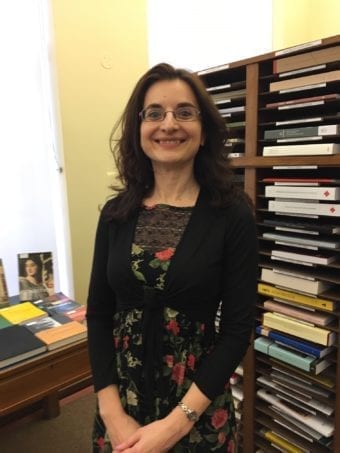
Claudia Daniotti is an art historian and researcher specializing in Italian Renaissance art, with an emphasis on iconography, the classical tradition and the transmission of visual motifs from antiquity to the present times. She holds a PhD from The Warburg Institute, University London, and a BA (Hons) and MA in History of Art from the Ca’ Foscari University, Venice. Her first monograph on the reception of the myth of Alexander the Great in Renaissance Italian art, based on her doctoral dissertation, will be published in 2020.
Since 2004, Claudia has been lecturing both in academia and museums, teaching across a range of areas and periods in Italian art history spanning from the fourteenth to the mid-twentieth century. She was a Visiting and Associated Lecturer in Renaissance and Baroque to Neoclassical Art at Buckingham and Bath Spa Universities (2016–2019), a Teaching Assistant at the Warburg Institute (2014), and worked for three years at the Estorick Collection of Modern Italian Art as an Education and Exhibition Assistant (2008–2011). She is also an experienced tour guide, having led bespoke guided tours to museum permanent collections and temporary exhibitions for years, both in Italy and the UK. Claudia has published extensively in the fields of the classical tradition and fourteenth- to eighteenth-century art history, contributing essays, articles and catalogue entries to a number of edited volumes, journals, exhibition catalogues and conference proceedings. She is a founding member of the association and on-line journal Engramma. La tradizione classica nella memoria occidentale, on whose editorial board she sat until 2015.
During her fellowship at CIMA, Claudia will investigate Marino Marini’s sculpture in light of its appropriation and reinterpretation of models from antiquity, particularly from ancient Etruria and Egypt. Her research project aims to reassess Marini’s work within the context of the wider reception of those civilizations in late nineteenth- and early twentieth-century Italy, and in relation to the coeval changing perception of the ancient past and the Fascist redefinition of a new national identity.
Michele Amedei
Spring 2020
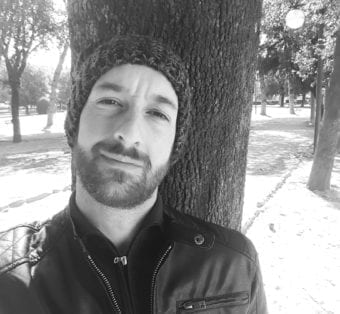
Michele Amedei received his Ph.D from the University of Florence, Pisa and Siena. Michele has always been interested in studying the lively exchanges between American and Italian artists. His research concerns, on the one hand, the presence of U.S painters and sculptors in Florence in the first half of the nineteenth century (this was the focus of his Ph.D dissertation) and, on the other, American artists such as John Singer Sargent, whose friendship with the Piedmontese painter Alberto Falchetti was the topic of an article he published in ‘Apollo’ in 2018. Most recently, Michele has directed his attention towards the connections between U.S. artists and the Florence Academy of Fine Arts in the first half of the twentieth century. He is also collaborating on the organization of an exhibition dedicated to the Romantic painter Giuseppe Bezzuoli, scheduled to open at the Galleria degli Uffizi in 2020. Between 2016 and 2017, Michele was the Terra Foundation Pre-Doctoral fellow at the Smithsonian American Art Museum. In September and October of 2017, he additionally received a bimonthly grant from the U.S. Capitol Historical Society, Washington, D.C. to support his Ph.D research.
As a fellow at CIMA, Michele will study Marino Marini’s connections with a group of American artists, art dealers and collectors including Joseph H. Hirshhorn, Curt Valentin, Alfred Hamilton Barr, Irving Penn and Alexander Calder, whom the sculptor befriended between 1948 and the 1960s.
Gianmarco Russo
Spring 2020
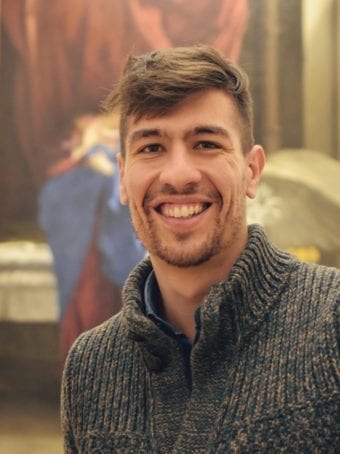
Gianmarco Russo is a PhD candidate in Art History at the Scuola Normale Superiore (Pisa). Under the supervision of Massimo Ferretti, he is currently completing his doctoral dissertation on Alvise Vivarini, with special attention to the relationship of the master with Giovanni Bellini and to nineteenth- and twentieth-century readings of Renaissance art. He attended both the Scuola Normale Superiore and the University of Pisa, defending both his BA and his MA thesis on Lazzaro Bastiani, a Venetian painter until now unjustly interpreted as solely outdated. He is preparing Bastiani’s first catalogue raisonné.
Gianmarco’s research focuses on fifteenth-century painting in Venice and Italian modern sculpture, addressing both connoisseurship and criticism issues. He has published articles in leading academic journals on Roberto Longhi (“Paragone,” 2015; “Prospettiva,” expected 2019), Adriano Cecioni (“Ricerche di storia dell’arte,” 2018), Lazzaro Bastiani (“Paragone,” 2018) and the Vivarinis (“Humanistica,” expected 2019). He presented papers in several international conferences on Giovanni Bellini (Fondazione Cini), Lazzaro Bastiani (University of Bologna), Carlo Ludovico Ragghianti (Fondazione Ragghianti) and Neri Pozza (Scuola Normale Superiore), which were then published in the proceedings. He is a contributor to Dizionario Biografico degli Italiani, with entries on Niccolò Rondinelli (2017) and Antonio, Bartolomeo and Alvise Vivarini (expected 2020).
For the Marino Marini exhibition held in Pistoia and Venice in 2017 and 2018, respectively, Gianmarco delved into the artist’s female nudes through a systematic analysis of Marini’s stylistic evolution and a fresh study of archival documentation. Gianmarco’s research at CIMA aims to show that Marini’s sculpture may be better comprised by regarding it as a struggle between ‘composition’ and ‘poetry.’ Studying the female figures created between 1938 and 1945, he seeks to demonstrate that Marini’s idea of plastic construction of volumes on one hand, and of expressive power of surfaces on the other, is deeply rooted in the figurative debate on fifteenth- and sixteenth-century sculpture sparked among contemporary artists, critics, collectors, and museum curators.

